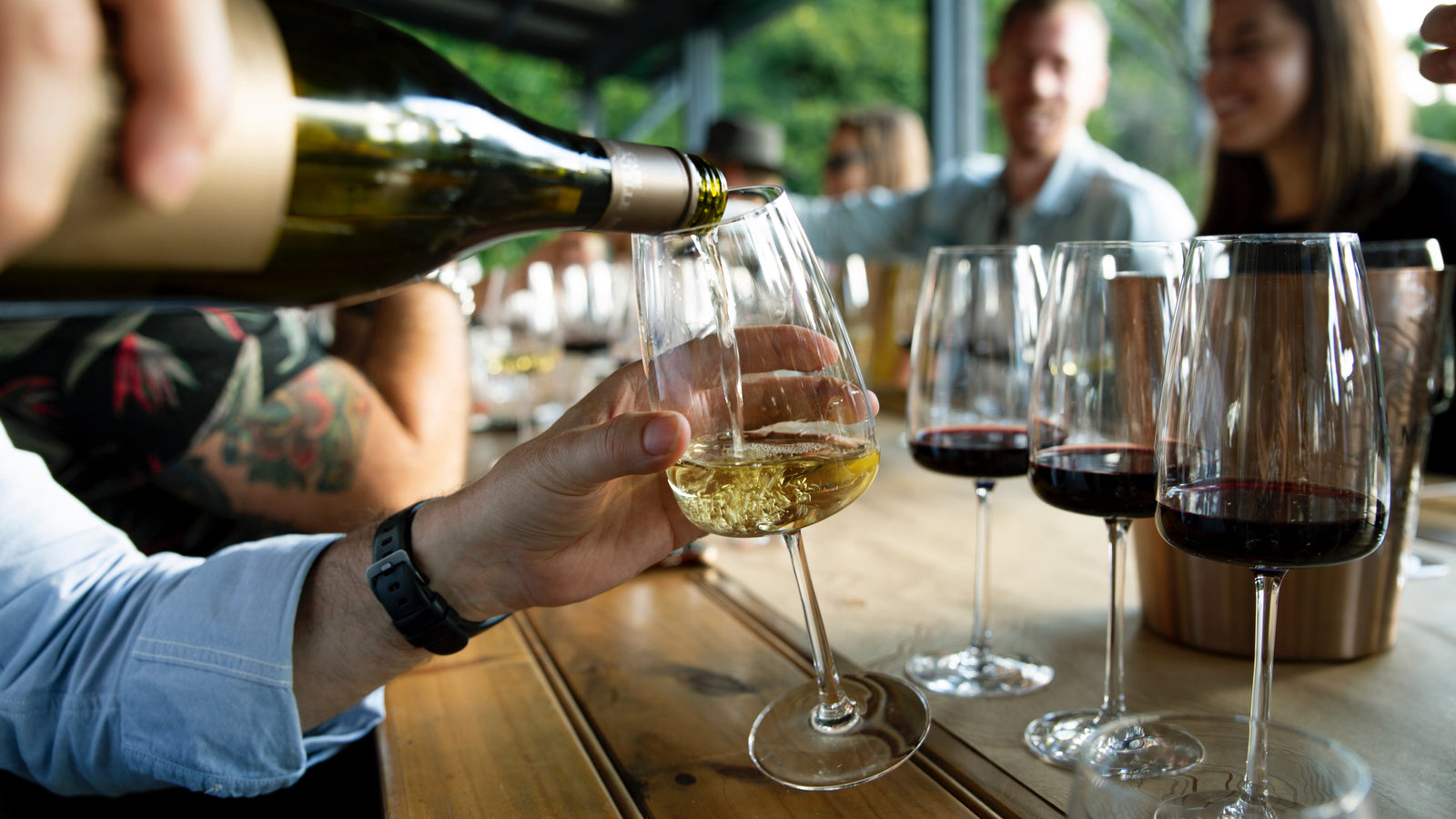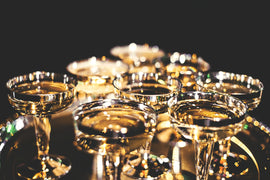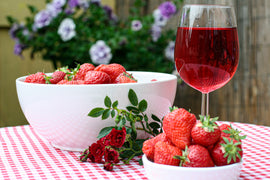Typically, when discussing wine, most attention is placed on aromas and flavors, which seems to make sense since they are a wine's most immediately striking characteristics. Texture is the tactile sense of wine on the mouth, tongue and throat. The idea of texture in a liquid is so difficult that wine experts cannot even agree on what to call it. You won't find the word ‘texture’ listed in the encyclopedic Oxford Companion to Wine, for example. Instead, you must settle for the unappealing term ‘mouthfeel’ and its constituents: body, density, weight and viscosity. Whatever you call it, great texture is a crucial characteristic of the best wines. Texture is sort of a conveyor belt that carries the aromatic and flavor components of a wine through the mouth. Let your organoleptic senses focus on the textures of this month’s selections. Keep the wine in your mouth and play with it. You will discover it is the combination of texture, aroma and flavor that makes these wines special.
Philippe Raimbault “Apud Sariacum” Sancerre 2018
Sancerre is the name of a wine appellation (AOC) as well as a city, located in the Loire Valley. It is part of the "central vineyards" of the Loire Valley, so named not because they are in the center of the Loire, but rather because they are nearly in the center of France. Together with neighboring Pouilly-Fumé, the region makes up the easternmost extension of the Loire Valley. The area is more than 300 miles from the Atlantic Coast and is actually closer to the Champagne wine region than it is to the middle-Loire city of Tours, and the Vouvray and Chinon AOCs. The distance from the Atlantic gives this region more of a continental climate than what is typical of the rest of the Loire, with short, hot summers and long, cold winters. The most dominating geographical influence of Sancerre is the nearby Loire River, which flows northward past the city of Sancerre, before it curves westward at Orleans, and makes its path to the ocean. In 1936, Sancerre white was given AOC status; reds were classified in 1959. The area demarcated as 'Sancerre' encompasses Sancerre itself and 14 parishes on the left bank of the Loire – from Montigny in the south to Bannay, 14 miles to the north. Only Sauvignon Blanc and Pinot Noir may be used in Sancerre, and more than anywhere else, Sancerre’s Sauvignon Blancs reflect the place more than the grape. The vineyards of Sancerre occupy a beautiful setting, where the dry, limestone soils of the area are known locally as caillottes. On higher ground, more limestone soils of the type locally called terres blanches are found, originating from the same stage of the Jurassic period as the finest soils of Chablis. A series of small valleys cut through the hills, each with their own soils and microclimate, leading to a local obsession with terroir.
The Raimbault Family have been vignerons since 1701, so you could say wine is in their blood. Their cave and most of their vineyard holdings are located in Sury-en-Vaux, just northwest of the town of Sancerre. Philippe Raimbault created his own Domaine over 20 years ago after separating from his brother. They both were working with their father and mother but did not share the same philosophies regarding farming and winemaking. With a total of 16 hectares, Philippe is one of the only non-negociant winemakers to make wine in three appellations: Pouilly-Fumé, Sancerre and the Coteaux du Giennois. Philippe and his wife Lynne are at the helm of their small operation with 5 employees helping them. They are members of Terra Vitis (certified sustainable viticulture) and are committed to farming and winemaking with minimal intervention. In creating his own Domaine, Philippe made new decisions: to carefully work using only compost, eliminating chemical fertilizers; to plow (which is rare in Sancerre); to get the roots down as deep as possible; to reduce yields to get a better concentration; to make a cuvée based on an association of specific parcels.
Philippe’s vineyards are located on the well-exposed, steep, calcaire slopes surrounding the village of Sury-en-Vaux. In this area, as in Chablis, many of the best vineyard sites are south-facing and rich in Terre Blanche soil. The soil is part of a geological stratum formed during the secondary era of the Jurassic period, and fossils of sea creatures more than 130 million years old are still discovered in these vineyards. Philippe is known locally as “The Fossil Man.” He has an extensive collection of all of the fossils that he has found on his property, many of which were discovered when he built his own cave. The fossil on the label of his Sancerre “Apud Sariacum” is one such creature. “Apud Sariacum” was the ancient name of the village of Sury-en-Vaux until the 12th Century.
Philippe is always looking for a natural maturity, a balance of acidity, and most of all, good minerality in his wines. All the grapes for the “Apud Sariacum” Sancerre are hand-picked and hand-sorted. The juice is kept on the lees in stainless-steel tanks and bottled in April/May after harvest. There is no malolactic fermentation done. The 2018 “Apud Sariacum” Sancerre is a wine with perfectly crisp acidity. It is the most classic example of the steely minerality that everyone has come to love and expect from Sancerre. With hints of fresh-cut grass and grapefruit peel, this is the perfect complement for an aged goat cheese like Crottin de Chavignol or a grilled seafood entreé. Other favorite pairings are sushi, roasted asparagus, spanakopita, deviled eggs, or grilled scallops.
Philippe Raimbault’s 2018 “Apud Sariacum” Sancerre is $27.00/bottle, $291.60/case.
Tobias “Formation” 2016
Tobias Vineyards and Winery is owned and managed by husband and wife Toby Forman and Dawn Pauli Forman. They both grew up learning the art and business of grape growing and winemaking from their legendary fathers, Ric Forman and Bill Pauli. Ric was the long-time winemaker at Sterling, Newton, and Duckhorn Vineyards in Napa Valley before launching his own Forman label. Along with Dick Graff of Chalone, he was credited for introducing vintage-dated Merlot in the US. Bill was the former President and CEO of Souverain Winery, former co-owner of Braren Pauli Winery, former President and CEO of St. Genevieve Winery in Texas, and was a Partner and President of Redwood Valley Cellars Winery. Toby still makes the Forman wines with his father, and Dawn is a partner in Yokayo Wine Co., which is located on the Yokayo Bench, just north of Ukiah in Mendocino County. The Yokayo Wine Company sits among the vines of Pauli Ranch. This facility is the premier custom crush operation for North Coast grapes and wine, serving vintners from every segment of the industry.
Stylistically, Toby Forman’s winemaking is more expansive than his father’s. "My style is a mixture of two different styles," he says. "It’s got a balanced characteristic but it's also a little higher in alcohol, and a little heavier on the palate with the tannins. What I like is a bigger California style of wine.” Formula winemaking is not on Toby’s agenda, and his 2016 Tobias “Formation” is truly representative of his style.
The majority of the fruit for the Tobias “Formation” comes from the Rockpile AVA in northern Sonoma County, California. S.P. Hallengren first planted vines on the Rockpile valley floor in 1884. The Rockpile homestead and ranch grew to 4,000 acres by the early 1960s when all but 700 ridgetop acres were taken by the Army Corps of Engineers in order to develop Lake Sonoma. It was not until the early 1990s that the first acres of modern-era vines were planted and thrived. The Rockpile AVA appellation is located at the Northwest edge of Dry Creek Valley where the two appellations actually overlap. All of the vineyards within the Rockpile AVA range from between 800 – 2,000 feet in elevation. Although Rockpile is located just 13 miles from the coast, Lake Sonoma provides an inversion layer that prevents the heavier fog that typically blankets other Northern California appellations, allowing for longer, more consistent sun exposure. Moisture and daytime temperatures are regulated by howling coastal breezes and, in many cases, steep slopes and rocky terrain require non-motorized vine management. Running through the Rockpile Ridge Vineyards is the Healdsburg–Rogers Creek Fault, a dominant earthquake fault in Northern California.
The 2016 Tobias “Formation” is a blend of 30% Rockpile Cabernet Sauvignon, 27% Rockpile Malbec, 15% Rockpile Petit Verdot, 5% Rockpile Cabernet Franc, 23% Mendocino Merlot. The Rockpile fruit is purchased from the Mauritson Family, and the Merlot comes from various vineyards the Pauli’s own in Mendocino County. For the 2016 “Formation” the best lots of fruit from the vintage were selected and each varietal was vinified separately in temperature-controlled stainless-steel tanks. Once fermentation was complete, the separate wines were aged in French oak, 40% new, for two years. Six months prior to bottling, the different varietals were blended and allowed to rest in oak to allow the flavors to become more integrated.
Taking a page of the old and influence of the new, Tobias is a perfect blend of both power and elegance. The wines reflect a sense of family, time, and place. When poured in the glass, rich aromas of black cherries and blackberries, are mixed with vanilla notes from the new French oak and complex savory herbs and spice. In the mouth the richness of fruit coats the tongue but is framed by youthful tannins and balanced acidity. While delicious now, the wine will continue to improve and mellow for the next few years, and maybe beyond.
The 2016 Tobias “Formation” is a wonderful accompaniment to meats such as grilled chops - veal, pork or lamb- especially with herbs such as thyme, rosemary and oregano, steak in a red wine sauce, roast rack or leg of lamb, or roasted duck. It pairs beautifully with caramelized roasted vegetables, especially those with a touch of sweetness, such as roast squash, red peppers and beets.
2016 Tobias “Formation” is $28.00/bottle, $302.40/case.





